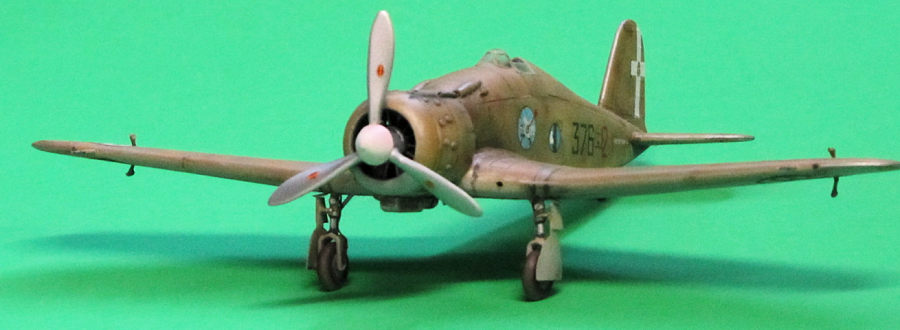
AML 1/72 Fiat G.50bis/AS 'Freccia'
| KIT #: | 72-031 |
| PRICE: | $14-32.00 |
| DECALS: | Four options |
| REVIEWER: | Ryan Grosswiler |
| NOTES: | Short run with photoetch, resin, vacuform canopy |

| HISTORY |
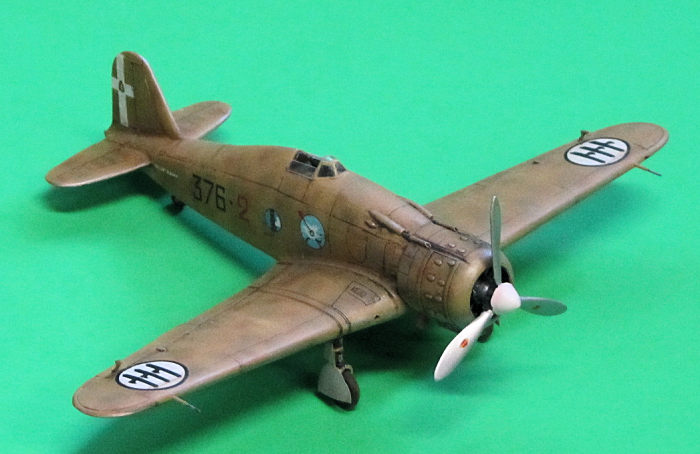 starts, however, with several air
forces stubbornly retaining the light armament and open cockpit of
that earlier era while nonetheless embracing these clean new
airframes. Such was the case here.
starts, however, with several air
forces stubbornly retaining the light armament and open cockpit of
that earlier era while nonetheless embracing these clean new
airframes. Such was the case here.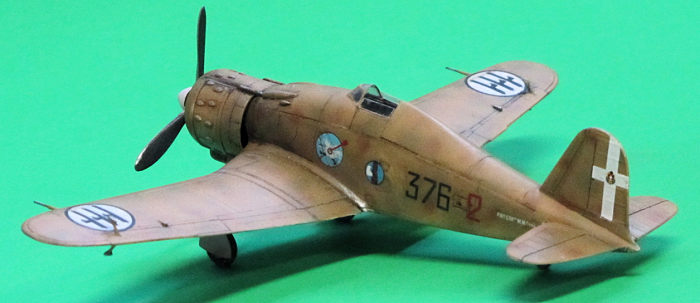 ut by and large it was simply just...there.
ut by and large it was simply just...there.| THE KIT |
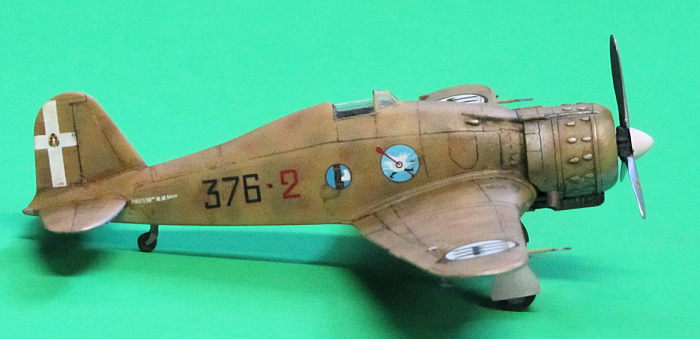 My sample is a nice limited run release, with two sprues
in dark gray plastic featuring fine raised and recessed detail, a
little vacuform windshield/canopy, a fret of photoetch, and two
wafers of resin detail parts and a third bearing the cowl type with
the bumps. Decals cover four machines: two Regia Aeronautica, plus a
captured South African machine and a Luftwaffe trainer sporting very
interesting camouflage. All four options a depicted in a full-color
sheet which encloses the instructions.
My sample is a nice limited run release, with two sprues
in dark gray plastic featuring fine raised and recessed detail, a
little vacuform windshield/canopy, a fret of photoetch, and two
wafers of resin detail parts and a third bearing the cowl type with
the bumps. Decals cover four machines: two Regia Aeronautica, plus a
captured South African machine and a Luftwaffe trainer sporting very
interesting camouflage. All four options a depicted in a full-color
sheet which encloses the instructions.| CONSTRUCTION |
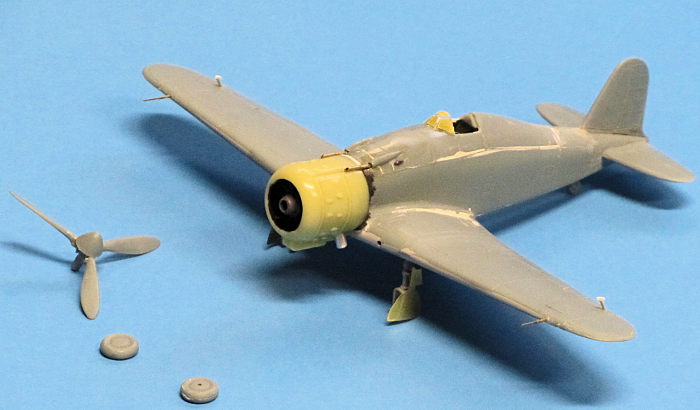 in place, and allow to cure. Then fit and glue the
cockpit floor and bulkhead, ensuring that the still-loose fuselage
top closes over these properly (note that the cockpit floor sits too
low. It should be about level with the top of the wing). Only then
glue the fuselage upper seams. After this, detail and paint the
cockpit. Only when all this is done add Part 61.
in place, and allow to cure. Then fit and glue the
cockpit floor and bulkhead, ensuring that the still-loose fuselage
top closes over these properly (note that the cockpit floor sits too
low. It should be about level with the top of the wing). Only then
glue the fuselage upper seams. After this, detail and paint the
cockpit. Only when all this is done add Part 61.| COLORS & MARKINGS |
 A shot of white primer started this out. No whiz on an
airbrush, I worked quite a while to get the subtle camouflage right,
overspraying a few botched mottles and eventually toning it all down
with a light overspray of the base coat. This was sealed in Future,
or whatever they call it now, and the decals went on, a mix of kit
and spares box markings. A wash and general weathering followed.
A shot of white primer started this out. No whiz on an
airbrush, I worked quite a while to get the subtle camouflage right,
overspraying a few botched mottles and eventually toning it all down
with a light overspray of the base coat. This was sealed in Future,
or whatever they call it now, and the decals went on, a mix of kit
and spares box markings. A wash and general weathering followed. | CONCLUSIONS |
| REFERENCES |
April 2020
Back to the Main Page Back to the Previews Index Page
Back to the Previews Index Page